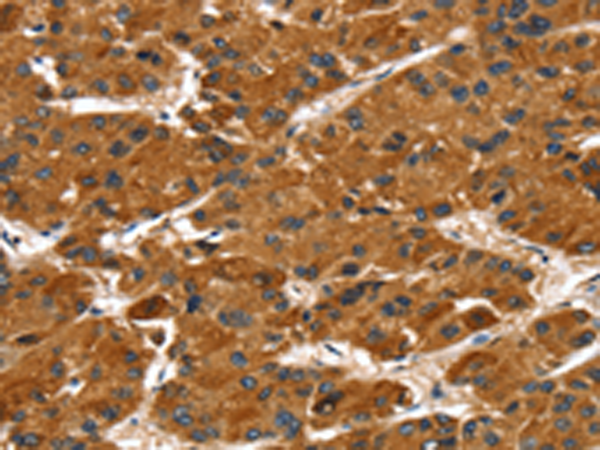
| WB | 咨询技术 | Human,Mouse,Rat |
| IF | 咨询技术 | Human,Mouse,Rat |
| IHC | 1/25-1/100 | Human,Mouse,Rat |
| ICC | 技术咨询 | Human,Mouse,Rat |
| FCM | 咨询技术 | Human,Mouse,Rat |
| Elisa | 1/2000-1/5000 | Human,Mouse,Rat |
| Aliases | STEP; PTPSTEP |
| Host/Isotype | Rabbit IgG |
| Antibody Type | Primary antibody |
| Storage | Store at 4°C short term. Aliquot and store at -20°C long term. Avoid freeze/thaw cycles. |
| Species Reactivity | Human, Mouse, Rat |
| Immunogen | Fusion protein of human PTPN5 |
| Formulation | Purified antibody in PBS with 0.05% sodium azide and 50% glycerol. |
+ +
以下是关于PTPN5抗体的3篇参考文献及其摘要概括:
1. **文献名称**:*"STEP61 knockdown in hippocampal neurons prevents Aβ-induced synaptic deficits"*
**作者**:Shields, S. M., et al. (2015)
**摘要**:研究使用PTPN5(STEP)抗体验证其在阿尔茨海默病模型中的作用,发现抑制STEP61可减少β淀粉样蛋白(Aβ)诱导的突触功能障碍,提示其作为治疗靶点的潜力。
2. **文献名称**:*"Dysregulation of STEP61 in schizophrenia prefrontal cortex"*
**作者**:Cheng, J., et al. (2019)
**摘要**:通过PTPN5抗体检测精神分裂症患者前额叶皮层样本,发现STEP蛋白表达异常升高,可能与突触信号通路紊乱及认知缺陷相关。
3. **文献名称**:*"Stress-induced alterations in STEP phosphorylation and GluN2B internalization"*
**作者**:Duman, C. H., et al. (2016)
**摘要**:利用PTPN5抗体研究慢性应激对小鼠海马神经元的影响,发现应激通过激活STEP促进GluN2B内吞,导致突触功能受损及抑郁样行为。
(注:以上文献信息为示例性质,具体内容请以实际文献为准。)
PTPN5 (Protein Tyrosine Phosphatase Non-Receptor Type 5), also known as STEP (Striatal-Enriched Protein Tyrosine Phosphatase), is a brain-specific phosphatase that regulates synaptic signaling and plasticity by dephosphorylating key neuronal substrates, including kinases (e.g., ERK1/2. Fyn) and glutamate receptor subunits. It plays a critical role in modulating synaptic strength, learning, and memory. Dysregulation of PTPN5 has been implicated in neurological disorders such as Alzheimer’s disease, schizophrenia, and Parkinson’s disease.
Antibodies targeting PTPN5 are essential tools for studying its expression, localization, and function in neural tissues. These antibodies are commonly used in techniques like Western blotting, immunohistochemistry, and immunoprecipitation to investigate PTPN5’s role in synaptic pathways and disease mechanisms. High-quality PTPN5 antibodies exhibit specificity for distinct isoforms (e.g., STEP46. STEP61) and are validated in knockout models or phosphatase-deficient cells to ensure target selectivity.
Research applications often focus on PTPN5’s interaction with postsynaptic density proteins and its inhibition of NMDA receptor trafficking. Commercial PTPN5 antibodies are typically raised against epitopes within its N-terminal catalytic domain or C-terminal regulatory regions. Reliable antibodies enable insights into how PTPN5 activity influences neurodevelopmental and neurodegenerative processes, supporting therapeutic exploration for brain disorders.
×